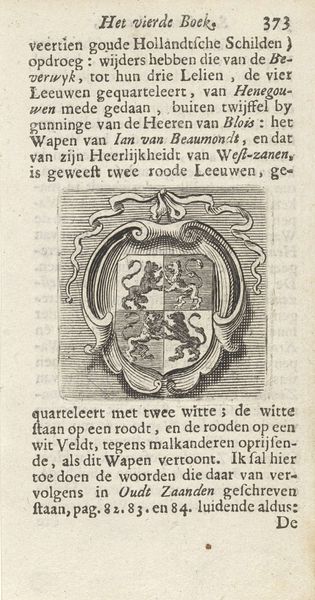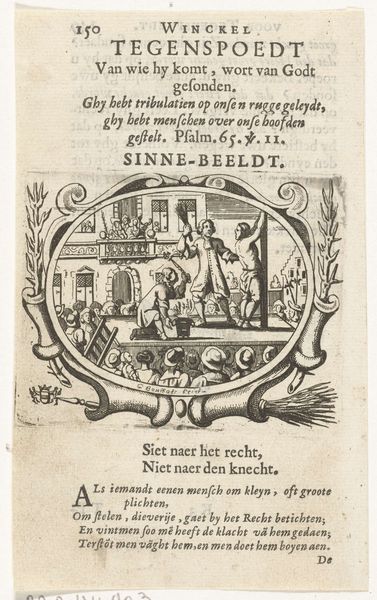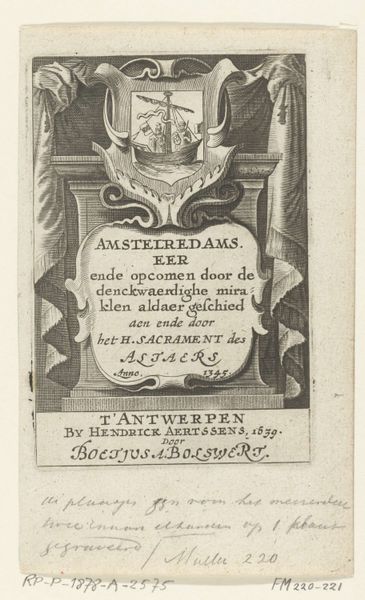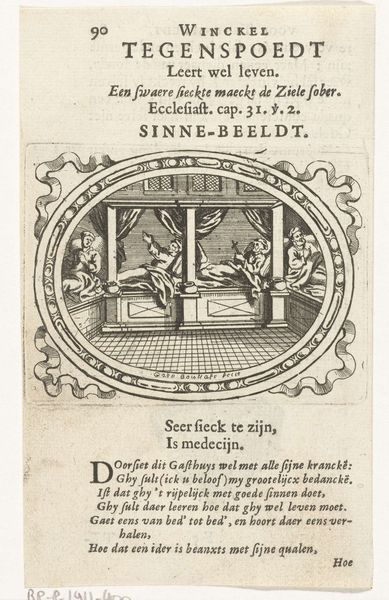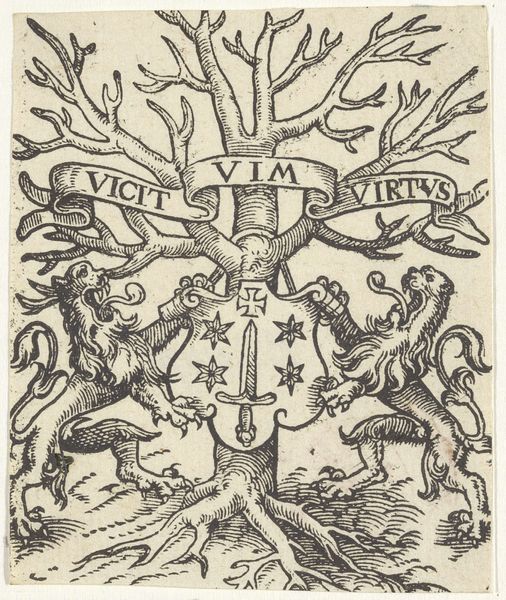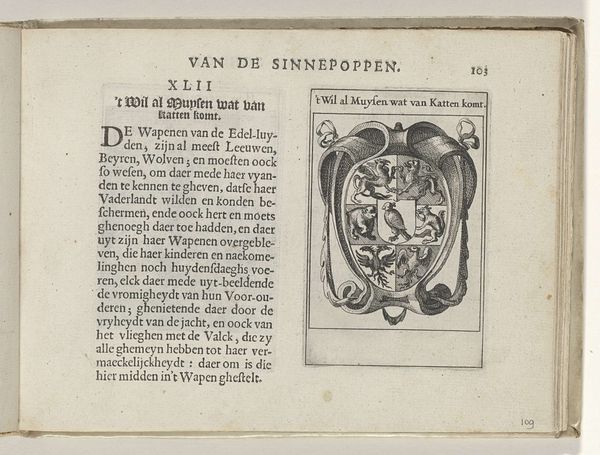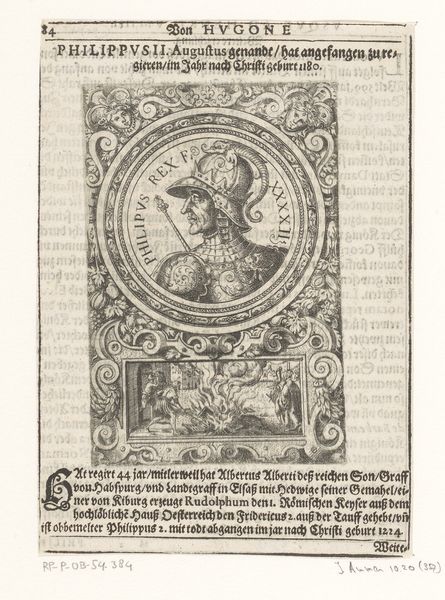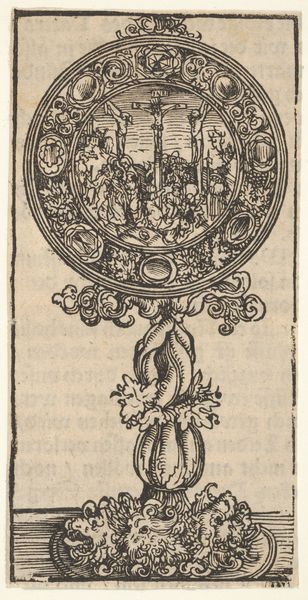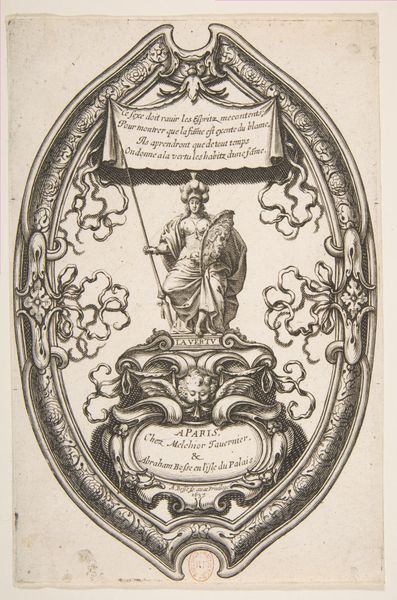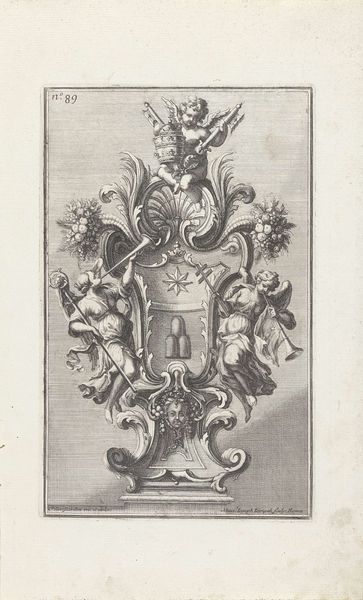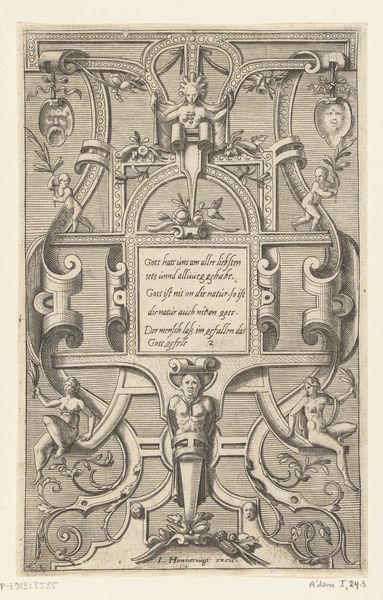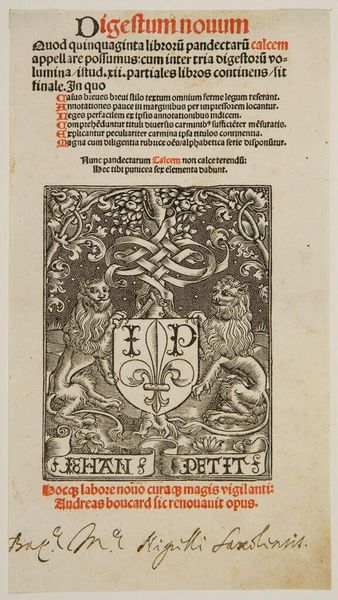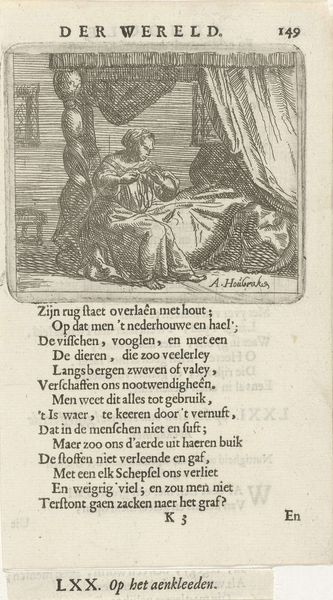
#
comic strip sketch
#
old engraving style
#
hand drawn type
#
personal sketchbook
#
sketchwork
#
pen-ink sketch
#
pen work
#
sketchbook drawing
#
storyboard and sketchbook work
#
sketchbook art
Dimensions: height 59 mm, width 66 mm, height 131 mm, width 70 cm
Copyright: Rijks Museum: Open Domain
Editor: Here we have Hendrik Jacobsz Soeteboom's "Wapenschild van de familie Van Zaanden," created in 1658. It's a pen and ink sketch, quite small. I find the intricacy of the crest design remarkable, given the tiny scale, almost like a stamp. How do you interpret this work? Curator: This piece speaks volumes about identity and power structures of the time. Heraldry wasn’t just decorative; it was a visual assertion of lineage, land ownership, and, ultimately, authority. Soeteboom’s meticulous rendering, even in a seemingly minor sketch, reinforces the Van Zaanden family's position within the Dutch social hierarchy. What do you think the choice of the pen-and-ink medium says about the work's intended audience and function? Editor: Maybe it was intended for a smaller circle, more personal. I wonder about the text accompanying the crest. Is it significant? Curator: Absolutely. The text likely elucidates the historical claims and familial connections bolstering the Van Zaanden's status. Notice the phrase "oudt geslacht"—"old lineage." That harkens back to a romanticized, often constructed, version of the past used to legitimize present-day power. Consider how families still use symbols and narratives to assert their identity and standing. Editor: It’s interesting to think about heraldry as a form of branding, projecting a specific image. So, even a simple sketch like this becomes a political statement. Curator: Precisely! And in a society undergoing significant social and economic shifts, these assertions of tradition become all the more crucial. This shield is not just a picture; it's an active participant in shaping perceptions of class, privilege, and belonging. Editor: I hadn’t thought about it that way. Looking at it now, the sketch seems much more loaded with meaning than I initially perceived. Curator: That's the beauty of engaging with art from an intersectional perspective! It reveals hidden layers and challenges us to examine the forces shaping not only the art itself but also the society in which it was created.
Comments
No comments
Be the first to comment and join the conversation on the ultimate creative platform.
